The Commute
December 2021 - March 2022
Digital Drawings
Academic Project | Media Studies (Royal College of Art)
Tutor: Mirna Pedalo
The outbreak of Covid 19 necessitated a ‘Work from Home’ revolution. The flexibility of working at home and lack of commute makes hours of the day available for other life priorities. The time spent commuting in the tube becomes a nostalgic, liminal proximity between work and play. The tube as a metal cylinder that burrows through the earth is a human construct that is designed to provide both enclosure and circulation. I will investigate the implications of the commute as a human construct that frames the limbo between two spaces. As one of the last connections between architecture and the human body, the commute has the potential to physically recondition our habits and to force the body to rewire new spatial and conceptual relations to its surroundings.
I am fascinated with people’s proximities with, and, on the Tube. These proximities change one’s behaviors during the commute. Everyday objects are used in codified ways on the Tube. Women are blotting off oil or touching up their makeup, people are reading, or editing papers. People are staring intensely at every corner of the train except at one another - only dogs and young children have the audacity to exchange eye contact with another stranger. Londoners are creating an impenetrable boundary between themselves and others when scrolling on their phones. People are flicking through the morning paper and leaving it behind when getting off the train. People lay the paper on the seat, or wedge the paper between seats, or use the space between the back of the seat and the face of the tube as a communal bookshelf. These everyday objects can feature simultaneously as a boundary and an interface between people on the tube. They can also act to mediate issues of privacy and surveillance, with acts of freedom and exhibitionism in the context of domestic life and the public realm. The extension of the body with prosthetics becomes an expansion of one’s consciousness of space, time, and corporeality. Experiencing life underground, and the phone, as a tool can be used to delineate between boundaries and bodies, and the implications of technology on temporal and spatial perception.
The pandemic and its effects have been a traumatic scar in our collective memory. With many people around the world succumbing to death, it feels necessary that we treasure the details that are often overlooked and memorialize things, as mundane as commuting on the Tube. My process consists of illustrated vignettes of scenes on the tube, in London, New York and Hong Kong, cities that I consider my home at different points of my life. This personal project should capture the nostalgia and nuances of commuting to work.
Official Project Site (Royal College of Art Media Studies Webpage)
All prints are available for sale, sized at A5 (148mm x 120mm), and backed on card. Each print is £12.00 if you are located in the United Kingdom (or £15.00/$19.00 USD, if you are located elsewhere), shipping is on me. [Edit, March 20, 2022, all prints are sold out! Thanks for all the support!]


MTA - M Train
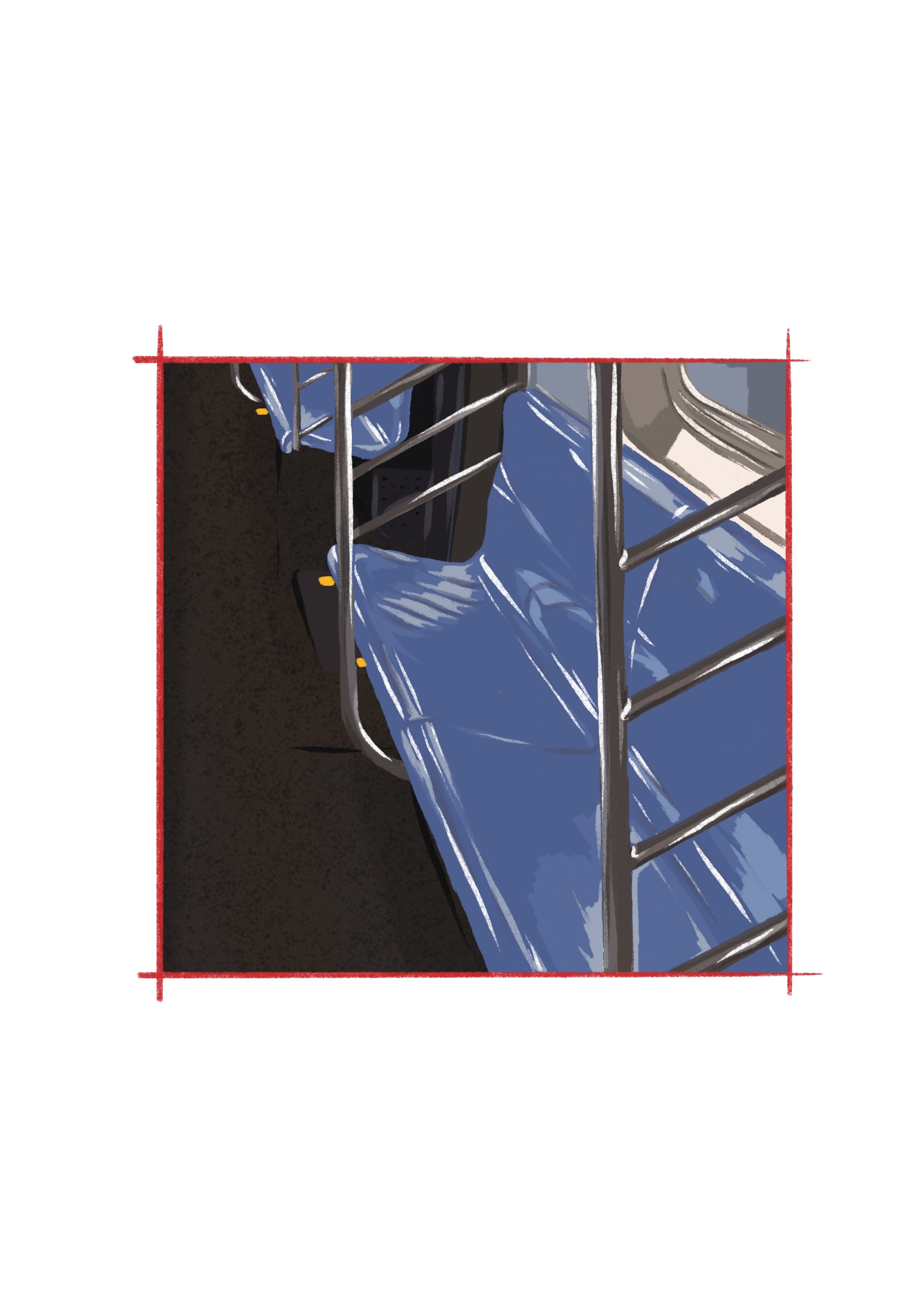
MTA - Q Train
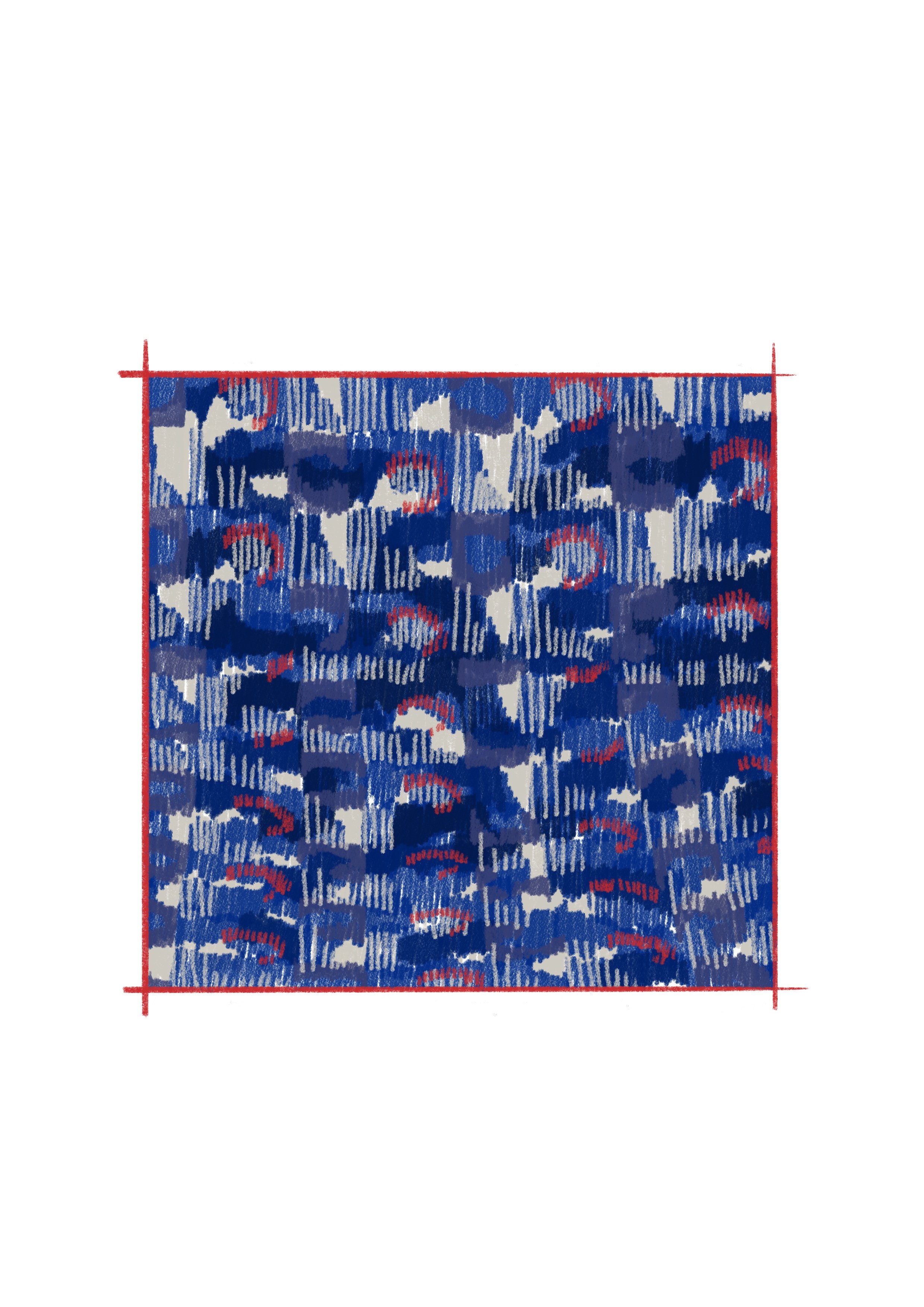
TFL - Piccadilly Line

TFL - Piccadilly Line and Newspaper

TFL - District Line

TFL - 243 Bus
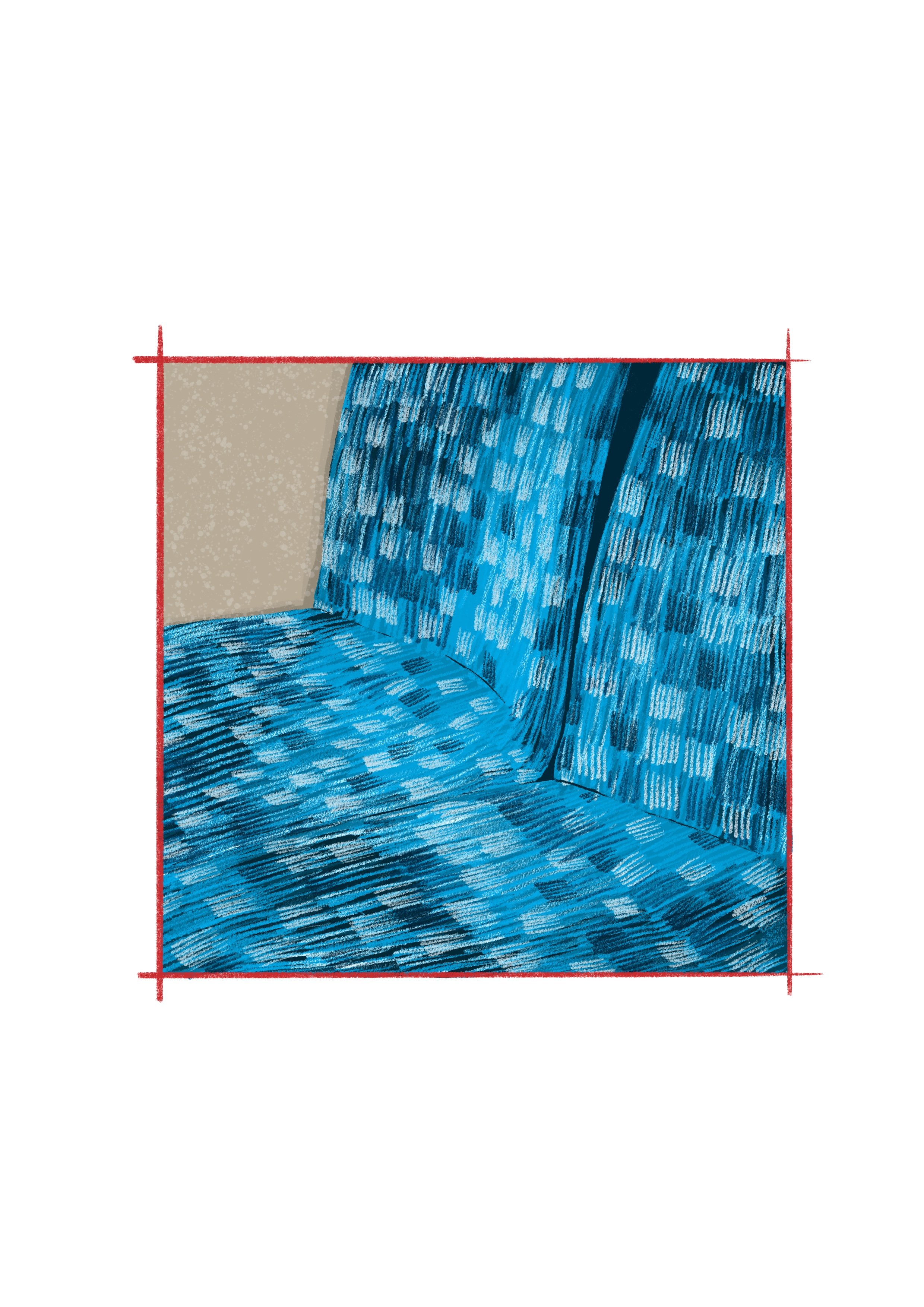
TFL - 30 Bus

TFL - Piccadilly Line Folding Seats

TFL - District Line Folding Seats

TFL - District Line Seats, Side View

TFL - Stockwell

MTR - Island Line

MTA - M Train 2
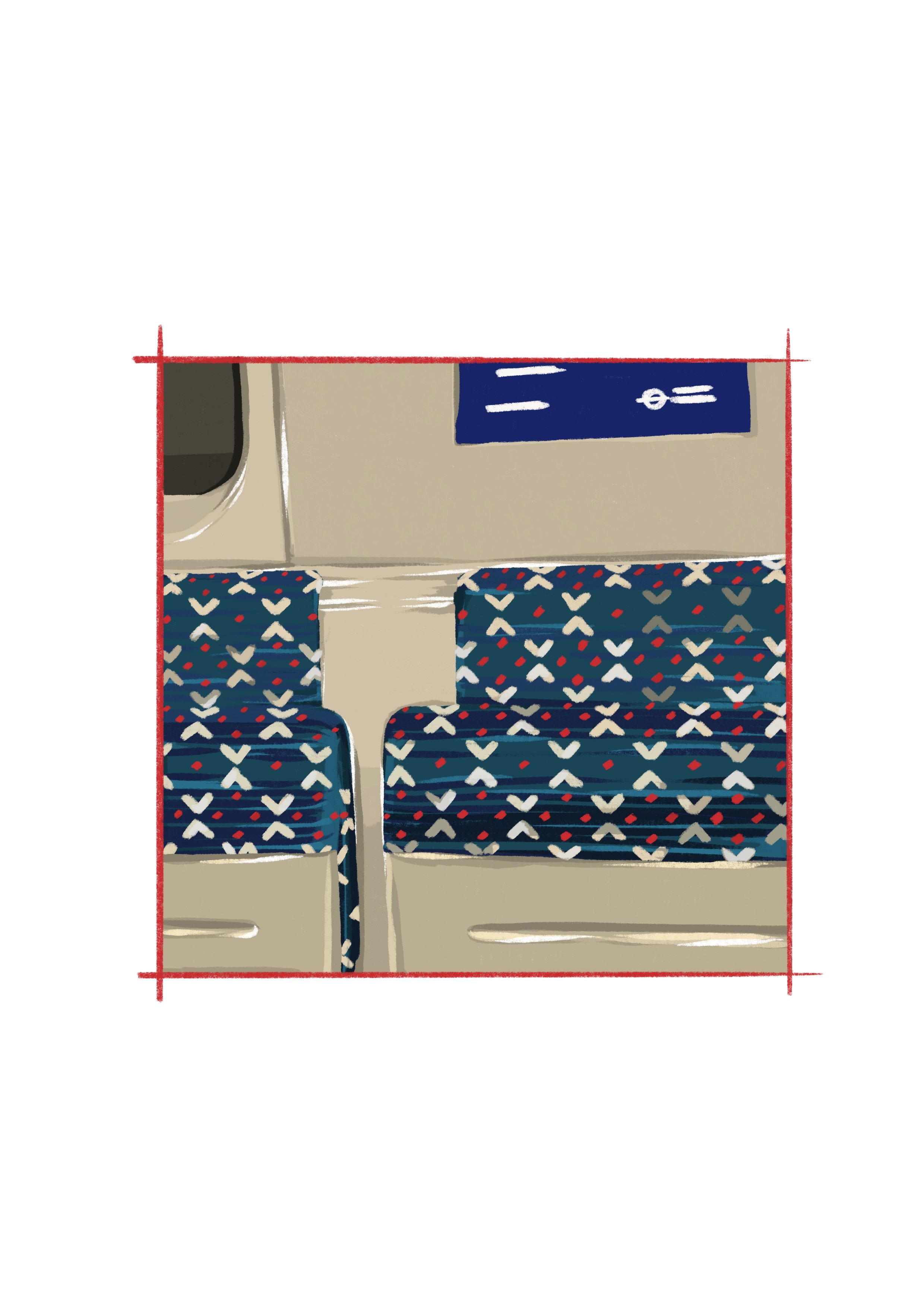
TFL - Victoria Line
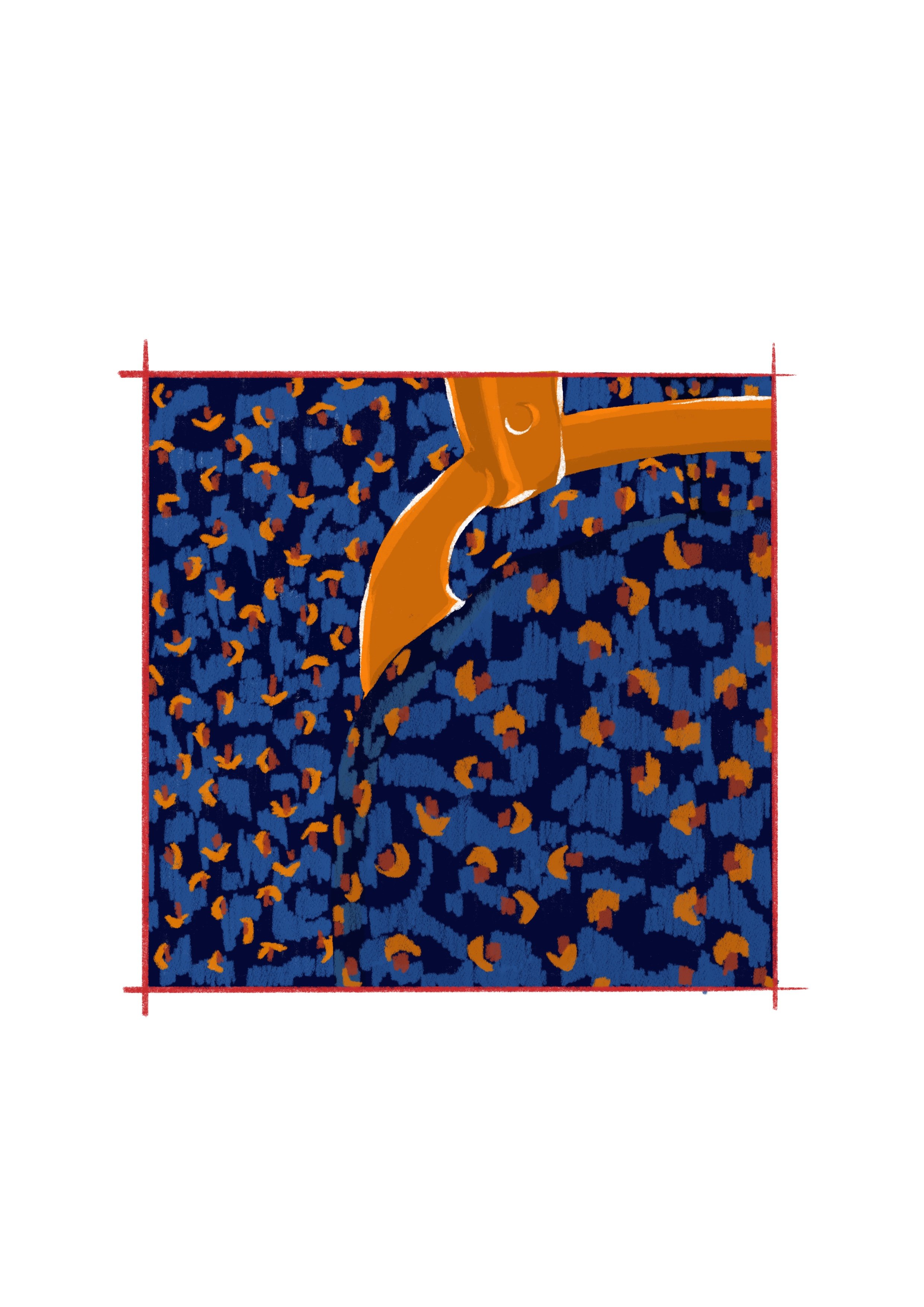
TFL - 452 Bus

TFL - 205 Bus

TFL - 91 Bus

TFL - District Line Seat
I am happy that the project was well-received by my tutors, Mirna Pedalo, Sam Nightingale, and guest critic Manca Bajec. I was also advised to look at Sharone Lifschitz’s “Sleeping Germany” (mixed media) 2000-2002; 2013 and the writings by James Young.
This is a beautiful project that interrogates the theme of proximity and boundaries / liminal spaces through engagement with public transport and commute. The series of carefully composed paintings that direct the viewer at the details, patterns, and fleeting moments experienced on the daily commute in London, New York, and Hong Kong, bring these three megacities into proximity with each other. What is noticeable is the removal of people, and the absence of the body, almost echoing the emptying of these spaces during the height of the Covid-19 pandemic. The distinction between the three locations is made only through distinct moquette patterns, colour schemes, and materials used for seats and handles. The use of drawing and painting, as well as careful framing of the chosen scenes, demonstrates your understanding of the role of media in the conceptualization, representation, and implementation of a research-based project. The brief is well written and addresses the themes and concepts discussed in tutorials and lectures, and the final iteration of the project successfully showcases its strengths.




